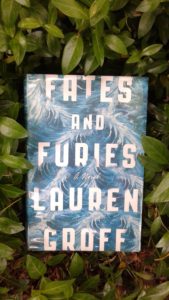When I was much younger, I used to love seeing the stories I wrote come to life. This usually entailed using my collection of My Little Ponies to act out the story, each of them representing a certain character therein. Sometime during my teenage years, I obtained an obscure PC game that let the user create simulated stage plays. I can’t even recall the title of it now, but it served as another way to bring my stories to life. Nevertheless, my options were limited, and the stage play game even crashed when I made the dialogue for the characters too complicated.
Hearing news of a game called The Sims way back in 1999 seemed to be a dream come true. It would allow the player to create a household of up to eight people and have full control over their actions. While the original Sims game contained elements that its successors didn’t – such as children who remained perpetually young – it still allowed me to create physical representations of story characters I’d dreamed up over the years.
While each expansion pack released for The Sims enhanced the experience in some way, the limitations of the game would have made me tired of it sooner or later. The announcement of its first successor, The Sims 2, solved this problem and got me even more excited to continue my forays into this world.
The Sims 2 surpassed the original game in many ways: you could now have your starting family build a dynasty over generations, as Sims could now grow up and eventually die. The game was more three-dimensional, and you were given more options of shaping a character’s look. And what’s better, children would inherit their looks from their parents rather than not resemble them in the slightest.
When The Sims 2 was released in 2004, I fell in love with it so much that I gave up entirely on the original game and got rid of my collection. This new versatility gave my imagination a workout. Over time, I even formulated a couple stories through The Sims 2 that I may one day craft into a fiction story of my own. And the option to create more realistic representations of my story characters added to my appreciation for The Sims 2. So much so that I thought I would never tire of it.
As with the original game, each expansion pack released for The Sims 2 made the experience all the more enjoyable. The option to send teenagers off to the college and follow their adventures there, allow families to adopt pets or start their own business at home, and to allow Sims to dabble in magic made it seem like there were no limits to where you could go with this.
I can’t recall why The Sims 3 – released in 2009 – seemed so much more appealing than its predecessor, but my addiction to The Sims 2 fell by the wayside once the newer game came along. In retrospect, my decision to get rid of my Sims 2 collection is one I regret. I was dazzled by The Sims 3 for the first few years, but my love for the series eventually soured.
The number of game glitches for The Sims 3 seemed to grow exponentially with each new expansion pack. The one I detested the most occurred when I would play as a single family through several generations. Whenever I tried to send one or more of the family members off on vacation or to college, the game would just freeze up. This particular glitch demanded I delete whatever family I was playing as and start a brand new one from scratch.
I eventually got so frustrated and jaded that I stopped playing The Sims 3 and sold off the whole lot of it. After more than a decade, I decided I was done with this life/family simulation game and thought I’d never look back.
Sometime late in 2015, I changed my tune when I purchased a copy of The Sims 4 that had been released a year prior. At first, it was fun. The Sims seemed more realistic than ever and their relationships and how they interacted with others could now be determined by their emotional states. For instance, it is somewhat difficult to get a loner Sim and an outgoing Sim interested enough in each other that a romance blossoms.
I had created three different characters for the Sims 4, moved them into different houses, and began playing the game in earnest. I had married each of them off and got to the point where each had a child. Out of nowhere, all my saved data for The Sims 4 up and vanished. I lost the three families I’d put some work into over several weeks and would have to start over from scratch. I don’t have any explanation for what happened, but I was agitated enough to give up on the series once more.
Part of me wonders if the problems I experienced with The Sims 3 & 4 might not have been an issue if I’d had a high-end PC computer that would have made the glitches less prevalent. But I may never bother to find out. One thought that I’ve had percolating for some time is to repurchase The Sims 2 and its expansion packs since I never encountered any major issues with them.
I’ve been around video games enough to know that bigger and flashier games are not necessarily better than what’s come before. My experience with the overall Sims series definitely proves this.
To sum it up: Never discount the value of old-school video games. They may hold more worth than something that looks like the best thing ever on the surface.

